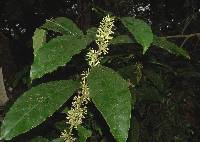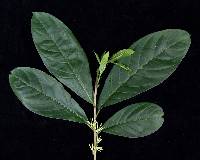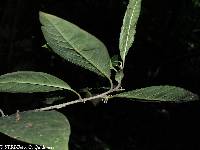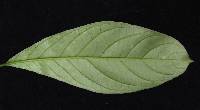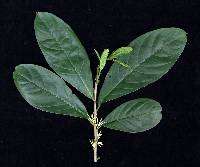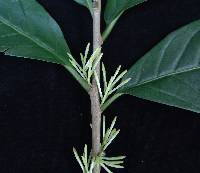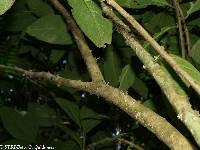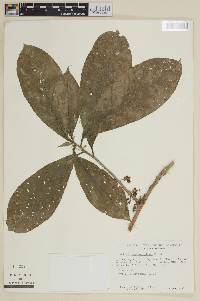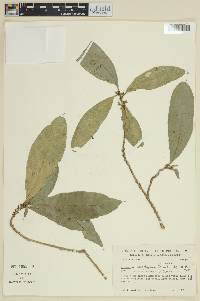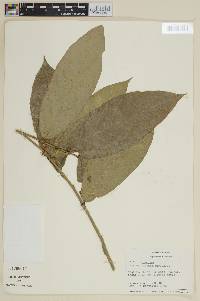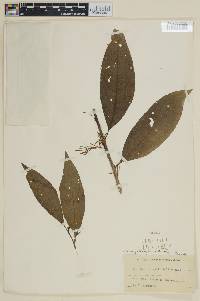
Neotropical Flora
|
Family: Solanaceae
|
C. baenitzii Ling. Shrub or small tree, to 8 (10) m tall; outer bark thin; young stems green, sparsely crisp-pubescent, glabrous in age. Leaves alternate; petioles to 1.3 (2.5) cm long, glabrous; blades narrowly elliptic to obovate-elliptic, acuminate, gradually tapered to an acute or rounded base, 12-25 (35) cm long, 3.5-8 (12) cm wide, +/- glabrous. Racemes short, axillary, fasciculate; peduncles crisp-pubescent, bracteate; flowers 5-parted, usually many, often on leafless stems; calyx cupular, 2-3.5 (4) mm long; corolla salverform, ca 1.5 cm long, the tube greenish, constricted just below lobes, the lobes white, spreading at anthesis, 4-5 mm long; stamens included; filaments fused to tube in basal two-thirds, pubescent near their point of fusion, turned inward below anthers; style slightly longer than stamens; stigma capitate, held just above anthers; nectary inconspicuous at base of ovary. Berries ellipsoid, 6-10 mm long, green becoming whitish then light violet and finally dark violet when mature; mesocarp thin, fleshy, white; seeds 1 or 2, minutely papillate. Croat 14568. Occasional, in the forest. Flowering from November to June, mostly in the dry season, from February to April. The fruits mature in the early rainy season, from May to August. Guatemala to Venezuela. In Panama, known from tropical moist forest in the Canal Zone, Bocas del Toro, Los Santos, and Darien, from premontane wet forest in Colón and Chiriqui, from tropical wet forest in Colón, and from lower montane wet forest in Chiriqui. See Fig. 480. |
|
|
|
Powered by Symbiota.



